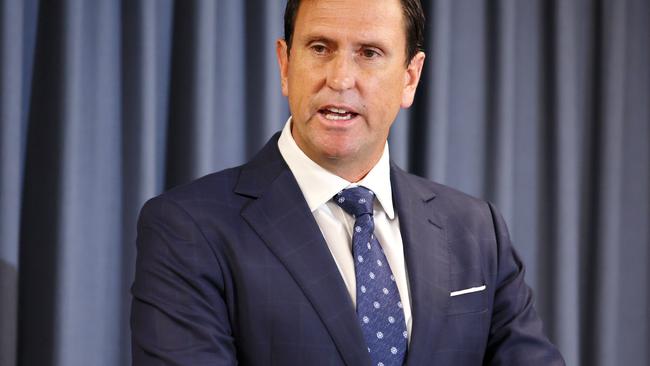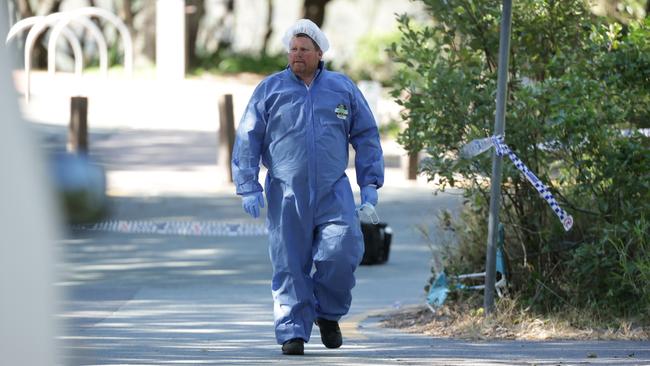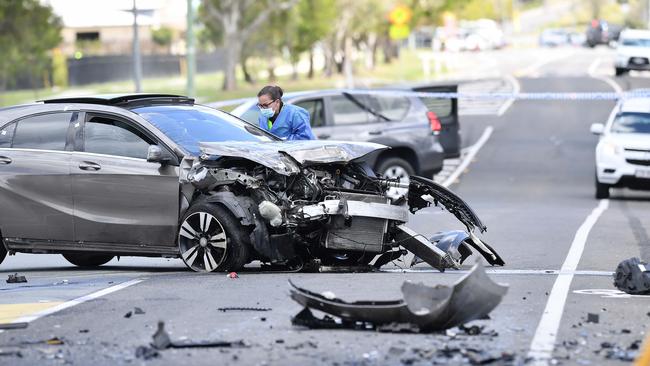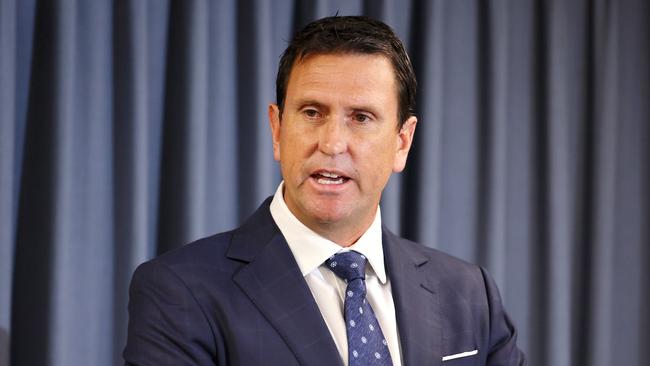Latest crime stats reveal rise in offences, breakdown of Sunshine Coast’s most dangerous suburbs
Assaults, murders, break-ins, and car thefts are on the rise on the Sunshine Coast, contributing to the state’s highest crime rate in more than 20 years. Here’s a breakdown of our most dangerous suburbs.

Sunshine Coast
Don't miss out on the headlines from Sunshine Coast. Followed categories will be added to My News.
Assaults, murders, break-ins, and car thefts are on the rise on the Sunshine Coast, contributing to Queensland’s highest crime rate in more than 20 years.
The latest annual Queensland Crime Statistics data has revealed more than 2,000 offences were committed every month on the Sunshine Coast in 2023 – with murders, assaults, break-ins, robberies, and arsons on the rise.
The most dangerous month on record was November 2023, with a total of 2589 offences committed. This was followed closely by August, with 2521 offences, and May, with 2480 offences.
There were more than 50,000 offences committed every month across Queensland in 2023 - the highest rate this century.
The shocking data has renewed claims the government has been unable to fix the crisis plaguing the state.
Last year, from January to December 2023, 26,062 offences were committed on the Sunshine Coast.
This was a 9.37 per cent increase from the 23829 offences committed in 2022.

Murders rose by 150 per cent in 2023, from three to five, and assault offences jumped 7.71 per cent, from 1712 to 1844, while the number of robberies increased 29.76 per cent, from 84 to 109 offences.
The state government argued the increase in assaults was a result of domestic violence data being included since 2021 and said its tough-on-crime laws were showing signs of working as the year went on.
The number of Domestic Violence Protection Order breaches on the Sunshine Coast has increased by 21.77 per cent, from 1847 offences in 2022 to 2249 in 2023.
The number of sexual offences, however, decreased from 604 in 2022, to 427 in 2023; but the number of statewide assault, sexual and robbery offences were the highest in at least 22 years.
Traffic and related offences on the Sunshine Coast were steady at 2832 offences for 2023.
The 9.37 per cent jump increase in all offences in 2023 compares to a population growth on the Sunshine Coast of about
1.67 per cent.
When broken down by suburb across the Sunshine Coast, the fresh data revealed Maroochydore was the most dangerous suburb for crimes committed.
Maroochydore had 6366 crimes committed there last year; an 8.06 per cent increase compared to the 5891 crimes committed in 2022.
Caloundra was a close second with 4211 crimes, followed by Nambour with 3041 offences.
The least dangerous suburb on the Sunshine Coast for 2023 was the rural hinterland town of Kenilworth – with 98 crime offences for the entire year.
The next safest was Pomona with 218 offences in 2023.
This was followed by Maleny, another hinterland suburb, with only 221 criminal offences for the year.
A Queensland Police Service spokeswoman said reported crime has increased on the Sunshine Coast due to a range of factors, including significant population growth and the cost-of-living crisis.
“Within the Sunshine Coast district specifically, police have particularly seen an increase in unlawful use of a motor vehicle (UUMV), which includes stolen cars,” she said.

“This is often closely associated to house entries to obtain the keys to vehicles.
“Police have several investigative strategies in place to address this matter, supported by intelligence information. Operations Lasso and Operation Filter have been initiated, along with patrol taskings and Automatic Number Plate Recognition (ANPR) technologies to ensure policing resources are firstly aware of the criminal activity and can be in the right place at the right time.
“Using the Coolum Division as an example, police recognised an increasing crime trend specific to the area. Through investigative strategies, police identified and took action against five recidivist offenders which reduced the UUMV occurrences in the division from an average of 12 per month to just three in December 2023.
“Police will continue to work with the Sunshine Coast community to ensure they feel safe, particularly in their own homes.
“One in every three home break-ins, which can lead to stolen vehicles and UUMV as mentioned previously, is through unlocked doors and open windows.
“Complacency to secure vehicles, homes and belongings attracts criminals to neighbourhoods. Police are encouraging the community to work together to play a part in preventing crime.”

Ninderry MP and Shadow Minister for Police and Community Safety Dan Purdie said power had been taken away from police to do their jobs and keep crime down.
“I was on the front line as a detective in the Queensland Police when the Palaszczuk Labor government starting watering down the youth justice laws in 2015,” he said.
“I had a front-row seat and saw first-hand how this tipped the balance of power away from the police and into the hands of young, repeat violent offenders.
“Unfortunately in Queensland, we are also seeing the number of hardcore repeat youth offenders increase. Two years ago, the number of repeat youth offenders who are responsible for the majority of offences was 10 per cent. That number has now risen to 20 per cent as a result of the watering down of youth justice laws.”
Mr Purdie said police just can’t stop the youth offenders.
“The epidemic of repeat young offenders livestreaming their crimes and bragging about their lawlessness and that the police can’t stop them just emboldens other young offenders to follow a similar path,” he said.
“With an increased population, weaker laws and fewer police, it’s no wonder our local police are struggling to get a handle on crime.
“We need to give our hard working police back the laws and resources they need to do their job, and keep our communities safe.”

Premier Steven Miles on Tuesday acknowledged the government’s efforts to decrease offending needed to progress more quickly, and in his first major speech last month declared keeping Queenslanders safe was the government’s most important obligation.
While the government has repeatedly said there was no quick solution, statistics reveal the situation is worsening. Since Labor was elected nine years ago the number of offences has soared by 31 per cent.
LNP Leader David Crisafulli said the government was unable to solve a crime crisis it created.
“Despite all the promises and rhetoric, these new statistics reveal nothing has changed,” he said.
“Labor has rolled out different laws, recycled plans and different faces, but this is the categoric proof the crime crisis has got worse under their watch.”




